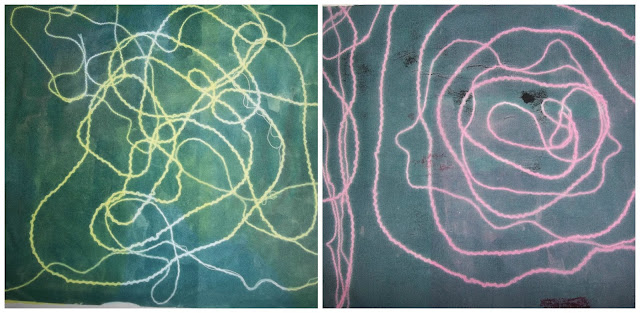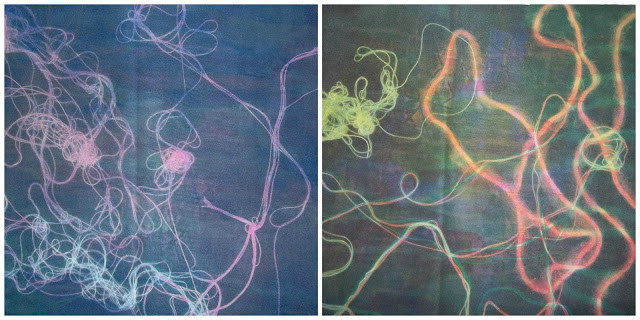I wouldn't say that I was stuck with my project, I could have carried on just doing stuff in my sketchbooks, but I wouldn't really have been getting anywhere. But one of the tutors and I went to speak to our technician about how I could translate some of my ideas into fabric, something that I wasn't really sure how to do. So we had a look through my sketchbook to found some inspiration. We chose my first attempt at light trail photographs and that afternoon she showed me how I could use the transfer dyes and heat press to create similar images,

To create these samples, I first had to paint several sheets of paper with the transfer dyes, each sheet with a single block colour on it, once they had dried, I print one of the bright colours on to the white poly sateen fabric, then I lay wool over the top in patterns that resemble the light trails. Then the black sheet is placed on top and printed, when the black sheet and wool are pulled away I am left with samples like the ones above. As much as I like my first samples, I felt they weren't complicated enough to be light trails, so I tried layering up the colours. The process is very similar to the previous one, but instead of applying the black sheet once you have placed your first lot of wool down you place down another colour sheet, and once it has been printed you make sure the wool doesn't come away as you take away the paper, you then add more wool and print the black sheet over the top.

This slightly more complicated process can be very frustrating, as the wool likes to stick to the paper rather than the fabric; I don't think I have a sample using more than one colour layer where the wool has stayed where it's meant to. But I definitely like the more complicated samples. What I also found annoying is that the colours you use to create the patterns, effect how dark your "black" layer will be, because the black transfer dye isn't completely black, which would make it difficult to do a large piece of fabric.
.jpg)
.jpg)
.jpg)
.jpg)



